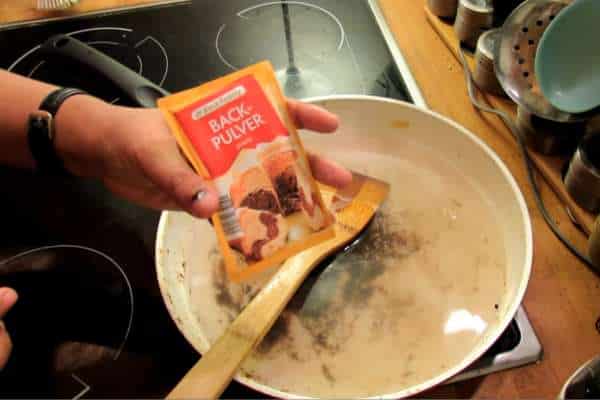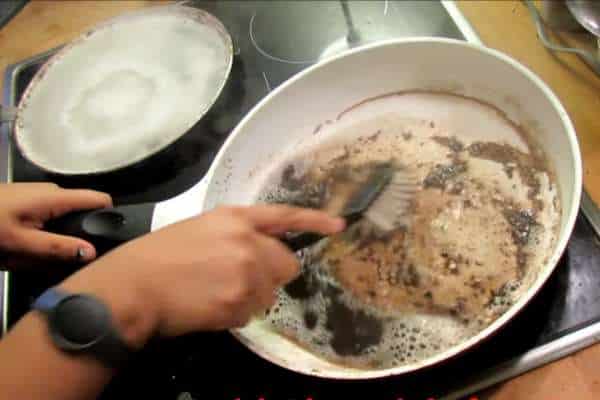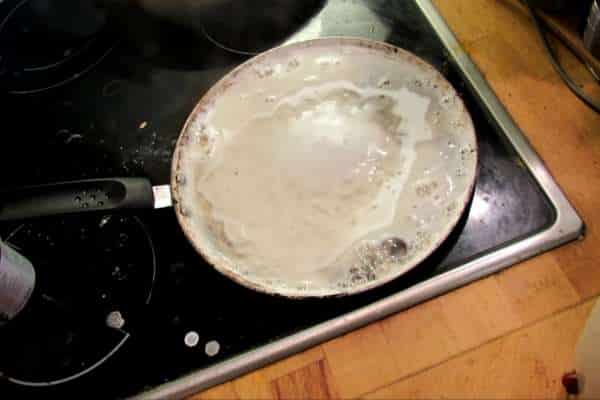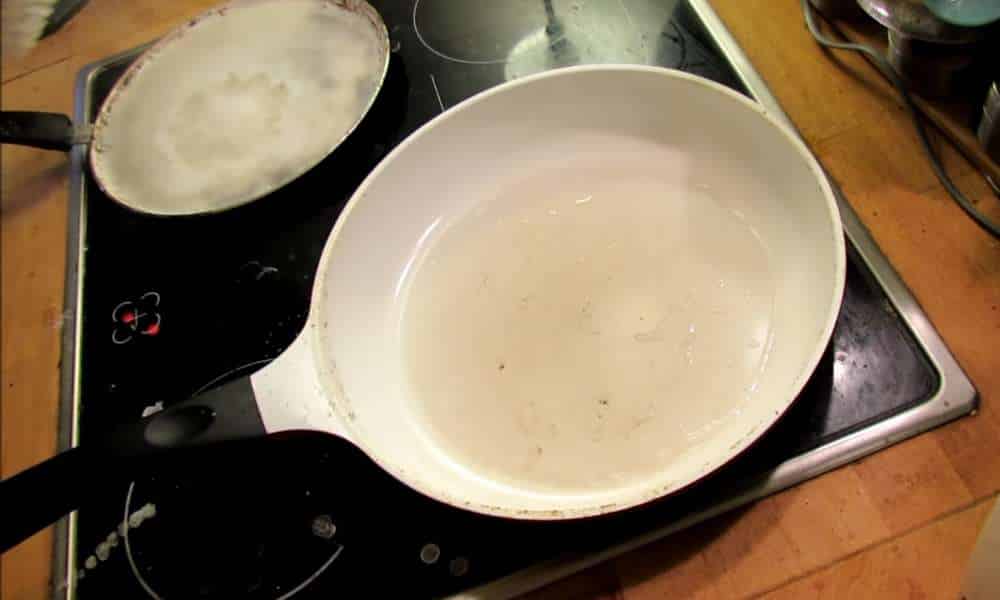Cooking with quality Cookware is an important part of creating Delicious dishes. Masterclass cookware offers superior performance in the kitchen, But it can be intimidating to clean. However, Keeping your Masterclass cookware in its best condition requires proper maintenance And cleaning techniques.
With the right tips and tricks, However, You can easily keep your Masterclass cookware looking as good as new. In this article, I will provide instructions on How to clean your Masterclass cookware So that you can get the most out Of it for years to come.
Allow the Cookware to Cool Completely Before Cleaning
It’s a common mistake we all make – trying to clean our Cookware right after it has been removed from the stove. However, Did you know that allowing your cooking utensil to cool completely before cleaning can help preserve its quality And extend its lifespan?
One of the primary reasons for allowing your cookware to cool off is safety. Hot surfaces can cause severe burns And accidents if not handled with care. If you’re in a rush or have little experience in handling hot items, Waiting until they’ve cooled down is crucial for avoiding accidents.
Additionally, Scrubbing away at hot pans with soap And water can also damage their non-stick coatings And warp their shape. So To use your Parini Cookware And Masterclass Cookware, It is essential to take proper care of them.
Remove Loose Debris and Wipe the Outside of the Cookware with a Damp Cloth

The first step in Maintaining your Cookware’s Cleanliness is to remove all loose debris before washing it. You can do this by wiping off any excess food or grease on the surface using A paper towel or scraper.
This prevents debris from Clogging your sink or Dishwasher And ensures that your cooking utensil looks as good as new. After removing the loose debris, Wipe the outside of the cooking utensil with A damp cloth to get rid of any remaining dirt.
Fill the Sink or a Basin with Hot Water and a Small Amount of Dish Soap
The first step in this Cleaning method is to fill up your sink or basin with hot water. Make sure the Water is hot Enough to remove any grime or residue on your Cookware. Next, Add A small amount of Dish Soap to the Water.
Be careful not to overdo it with the Soap as too much can leave behind a soapy residue. Once you’ve added the soap, Place your dirty pots And pans into the sink or basin. Let them soak for at Least 15 Minutes before Scrubbing them gently with a sponge or brush.
Gently Scrub the Interior and Exterior Surfaces Using a Soft Sponge or Brush

One of the most important steps in cleaning your Cook Masterclass cookware is to gently scrub both the interior And exterior surfaces using A soft sponge or brush. This will help remove any stuck-on food particles or stains that may have accumulated over time.
When choosing A sponge or brush to use on your Cook Masterclass cookware, Opt for one that is gentle yet effective. A soft-bristled brush or Non-Abrasive sponge will ensure that you don’t scratch or damage the surface Of your cooking utensil While still getting it clean. Be sure to avoid using steel wool pads or other Abrasive materials as they can cause Permanent Damage.
Rinse the Cooking Pot Thoroughly with Clean Water
It’s important to note that any residue left on your Cookware can Potentially transfer to other dishes you cook in the same pot or pan. This can lead to cross-contamination And potentially cause illness if not properly cleaned. By rinsing your cooking pot thoroughly with clean water, You’re removing any leftover food particles And ensuring that there are no harmful substances remaining on the surface.
For Stubborn Blemishes, Make a Paste of Baking Soda and Water and Apply it to the Affected Area

Stubborn blemishes on your cookware can be a frustrating and unsightly problem. But before you toss out your favorite pots and pans, try this simple solution: make a paste of baking soda and water! To make the paste, Simply mix baking soda with enough water to form a thick, Spreadable consistency. Apply it generously to the affected area of your cooking utensil And let it sit for at Least 15 Minutes. Then, Scrub the area with A soft-bristled brush until the blemish disappears. Rinse with Warm water And dry thoroughly.
Use Vinegar for Mineral Build-Up
Vinegar is an Incredibly versatile Cleaning agent that can be used to tackle a wide range of household tasks, including removing mineral build-up from cookware. To get started, simply pour some white vinegar into a spray bottle and spritz it onto your pots and pans.
Next, use a soft scrub brush or sponge to gently agitate the vinegar into the mineral deposits. Let the vinegar sit for 5-10 minutes before rinsing off with warm water. You’ll be amazed at how easily the mineral build-up comes off! With this Clean Masterclass tip, you’ll have sparkling clean cooking utensils in no time!
Rub the Affected Area with a Cut Lemon or Make a Paste of Lemon Juice and Baking Soda
You may have tried various cleaning methods that don’t work well, leaving you frustrated with the outcome. However, there’s one natural and effective way to get rid of grease stains on your Clean Masterclass cookware – using lemon juice.
The acidic nature of lemons makes them a perfect natural cleaner for cooking utensils. Cut a fresh lemon in half and rub it over the affected area of your Clean Masterclass cookware. The citric acid in the lemon juice will break down the grease buildup and leave your pots and pans sparkling clean.
Alternatively, Make a paste using equal parts of baking soda And lemon juice. Apply this paste to the affected area. Let it sit for about 15-20 minutes, Then scrub away using a sponge or scouring pad.
Dry the Cookware Thoroughly with a Soft Towel
When it comes to Cleaning your Cookware, Proper drying is just as important as thorough washing. After all, Any residual moisture left behind may lead to rust, Discoloration, or even bacteria growth. That’s Why it’s crucial to dry your cooking utensil thoroughly with a soft towel after each use.
In this Clean Masterclass Cookware guide, We’ll walk you through the best practices for drying Different types of pots And pans. For instance, cast iron and stainless steel should be dried immediately after washing to prevent water spots or stains from forming.
On the other hand, non-stick cooking utensils require gentler handling due to their delicate surface – using a soft cloth can help avoid scratches or peeling. For tough-to-reach areas such as handles or crevices, consider using a paper towel or cotton swab.
Avoid Using Steel Wool or Harsh Scrubbers
Steel wool And harsh scrubbers may seem like the perfect solution for getting rid of tough stains And grime. But they can actually cause more Harm than good. Not only can they scratch And damage the surface of your pots And pans. But they can also leave behind tiny metal Fibers that can be Dangerous If Ingested.
If you want to keep your Cookware in top condition, It’s Important to Use the right tools for the job. Instead of steel wool or harsh scrubbers, Opt for gentle sponges or brushes that won’t scratch or damage the surface of your pots And pans. You can also try using baking soda or vinegar to help remove tough stains And grime without causing any damage.
Store Cookware in a Dry Place to Prevent Rust or Corrosion
To prevent rust or corrosion on your precious Clean Masterclass Cookware, It’s Essential to store them in a dry place. Moisture can quickly Accumulate if you leave your cooking utensil wet after washing them.
This will eventually lead to rust formation on its surface, especially if the material used in making your cooking utensil is prone to rusting. To avoid this problem, Make sure to always dry your cooking utensils Thoroughly before storing them away.
Clean and Maintain Cookware Regularly to Ensure Longevity and Optimal Performance
Always read the manufacturer’s instructions before cleaning your cookware. Different materials may have specific needs that require unique care methods. For example, cast iron should never be soaked in water or washed with soap as this can damage the coating that makes it non-stick.
Conversely, stainless steel is generally safe for use with most detergents. But may require special attention for burnt food residue, another important consideration is storage.
Conclusion
Cleaning your Masterclass cookware is a simple And easy process that can be done with minimal effort. Whether you choose to hand wash or Use a Dishwasher, It’s important to follow the Manufacturer’s Instructions for optimal results. Be sure to use non-abrasive cleaning materials, As abrasive items can damage the surface of your pans. Regularly washing your cookware will help keep them looking like new And ensure you get the most out of them for years to come.
